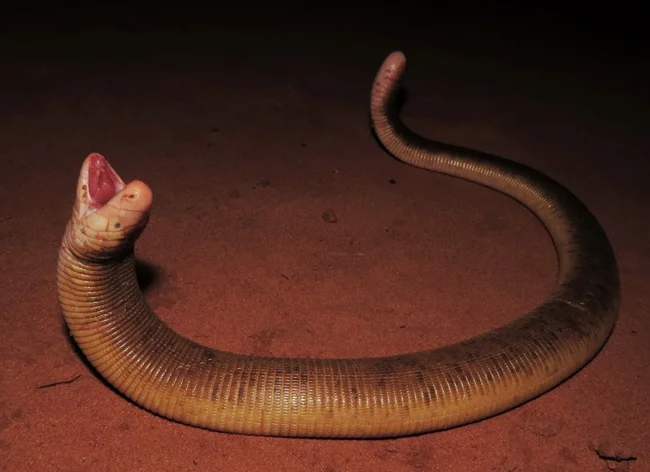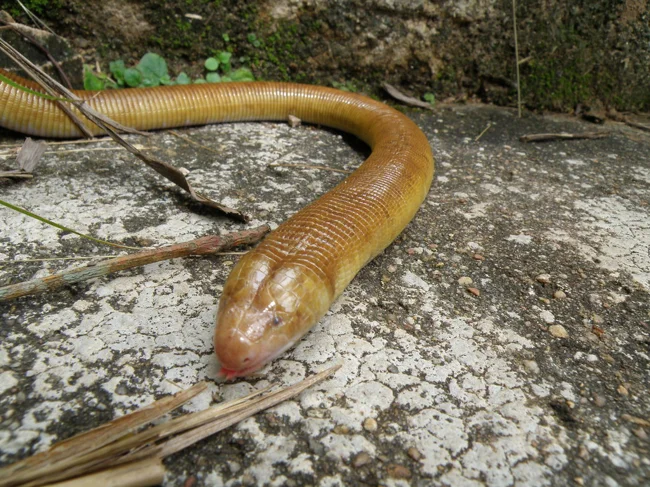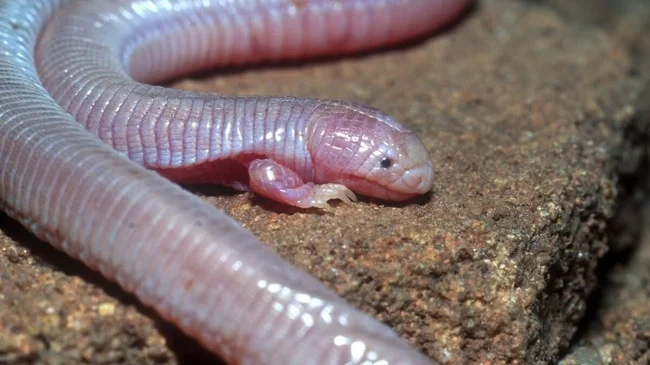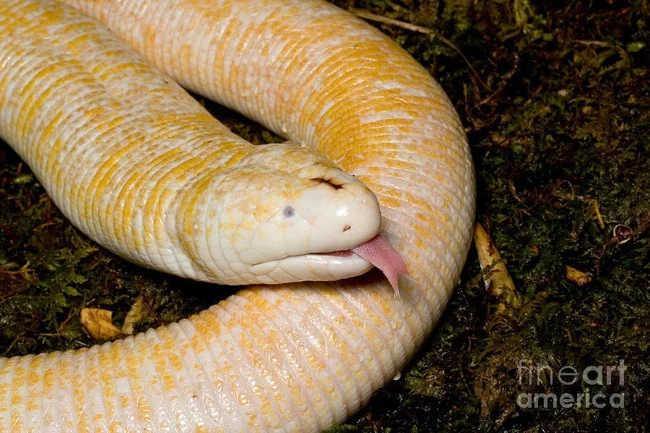Two-walkers or amphisbaenas are unusual animals, very similar in appearance to snakes or giant earthworms. 
Amphisbaenians, also known as two-year-olds, are a whole suborder of reptiles, which includes more than 200 species. Moreover, they live in all warm regions of the world! Reptiles inhabited all of South America, the coast of sub-Saharan Africa, the Arabian Peninsula and Madagascar. And particularly persistent species colonized the southern regions of Europe and North America. 
But even in these regions, most people are unaware of their existence. And all because in the Upper Cretaceous period, the common ancestor of amphisbaenus decided that he needed to hide underground from prying eyes. Then he looked like a standard, slightly elongated lizard. But millions of years of evolution turned his descendants into something blind and worm-like. And all this regardless of snakes! 
Amphisbaenus can grow the size of a small snake - up to 60 cm in length!
And geneticists, zoologists, and paleontologists unanimously repeat: two-year-olds are in no way related to snakes. Firstly, animals have different skull structures. Amphisbaenas cannot swallow food whole, but they crack the shells of arthropods and the bones of small vertebrates, which snakes cannot do. 
The skull of the amphisbaena is on the left, and that of the snake is on the right. The joke about the Alien is more than appropriate.
Secondly, due to the flat structure of the body, the lizards abandoned part of one lung. Snakes did this too, but there is a nuance. Their right lung was degraded, and Amphisbaenus’ left lung was degraded. 
However, 4 species of amphisbaenus retained small front legs. But does this make them happy?
Another remarkable feature of the amphisbaen is the pseudo-head. The tip of the tail, beveled at the top, resembles a head in its shape. It is for this reason that the animal received another name - two-year-old. The reptile's tail is separated from the body as easily as the tails of small lizards. A second of confusion is enough for the amphisbaene to dive into the saving darkness of an extensive network of tunnels. 
Amphisbaenas come to the surface only to warm themselves and mate.
The reptile is safe in the tunnels. There are no large predators underground. But for some species of two-year-old fish this is not enough. They stopped laying eggs and began carrying them inside themselves. After all, this way the enemy will not stumble upon a defenseless clutch while mom is hunting. White amphisbaenas acted even wiser: They hide clutches on the lower tiers of anthills and termite mounds, in areas where social insects store their garbage. There, children do not attract the attention of their owners and find abundant food in the form of insects that feed on the waste of the colonies. 
But regardless of the details, the tactic of “hiding and keeping a low profile” shows its full validity. After all, if animals survive 100 million years, then they are doing something right!
0 comments
